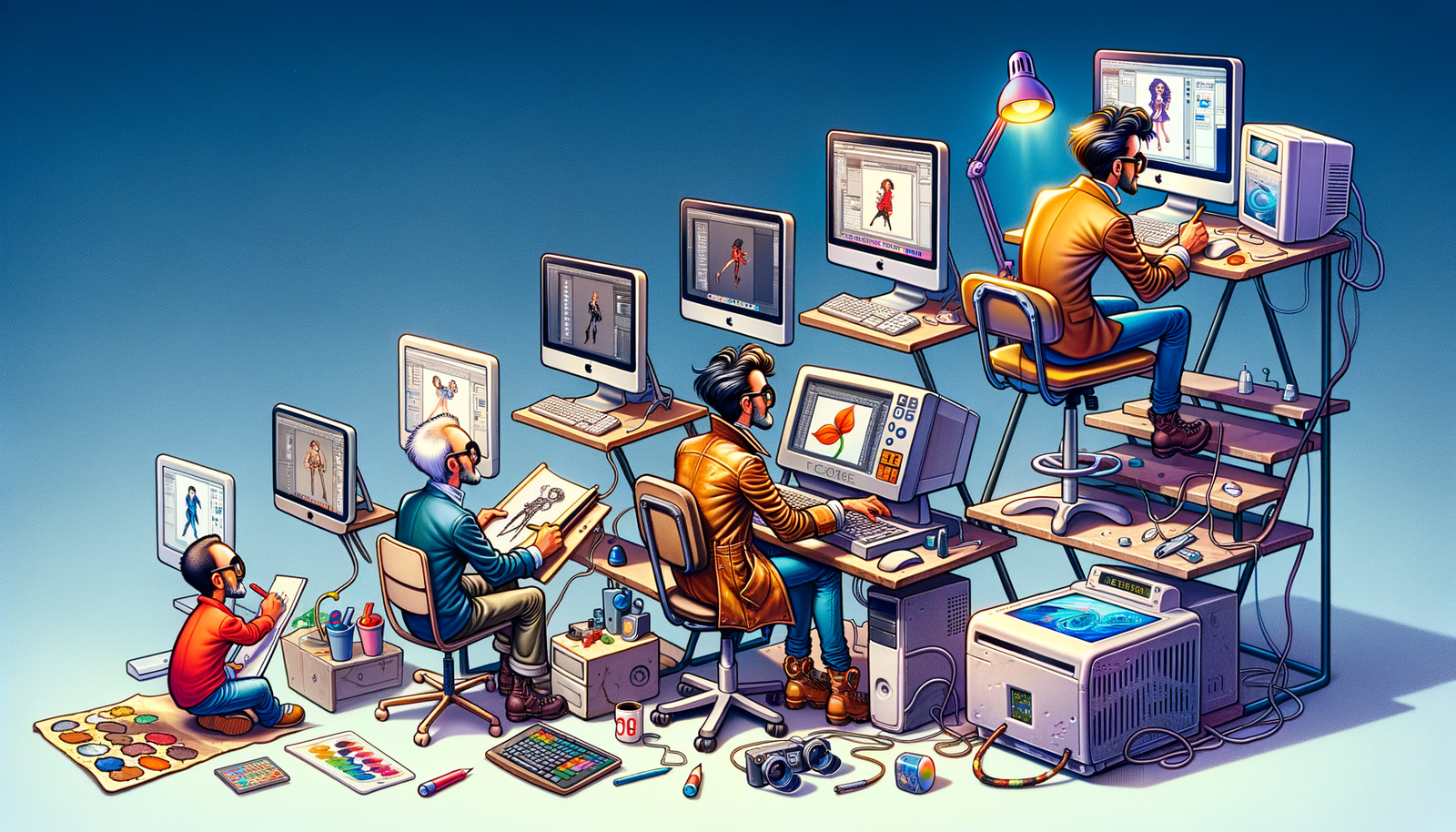Your Cart is Empty
Customer Testimonials
-
"Great customer service. The folks at Novedge were super helpful in navigating a somewhat complicated order including software upgrades and serial numbers in various stages of inactivity. They were friendly and helpful throughout the process.."
Ruben Ruckmark
"Quick & very helpful. We have been using Novedge for years and are very happy with their quick service when we need to make a purchase and excellent support resolving any issues."
Will Woodson
"Scott is the best. He reminds me about subscriptions dates, guides me in the correct direction for updates. He always responds promptly to me. He is literally the reason I continue to work with Novedge and will do so in the future."
Edward Mchugh
"Calvin Lok is “the man”. After my purchase of Sketchup 2021, he called me and provided step-by-step instructions to ease me through difficulties I was having with the setup of my new software."
Mike Borzage
Design Software History: The Evolution of Design Software in Fashion: From Digital Sketching to 3D Modeling and Real-Time Rendering Innovations
February 17, 2025 4 min read


Introduction
The fusion of technology and fashion has revolutionized the way the industry operates, creating a paradigm shift in design, production, and marketing. Design software has become an indispensable tool for fashion designers, enabling them to translate their creative visions into tangible products with unprecedented precision and efficiency. The evolution of design software in the fashion industry underscores the symbiotic relationship between technological advancement and artistic expression. Over the years, key milestones and innovations have propelled the industry forward, from the rudimentary digital sketching tools of the past to the sophisticated 3D modeling and real-time rendering software of today. This journey reflects not only the technological progress but also the industry's adaptation to changing consumer demands and environmental considerations.
Early Beginnings
The initial intersection between technology and fashion design marked a transformative era where traditional methods began to integrate with digital tools. In the late 1980s and early 1990s, the advent of personal computers and basic graphic design software laid the groundwork for this evolution. Pioneers like Susan Kare, known for her interface design work at Apple, influenced the way designers interacted with technology, inspiring fashion professionals to explore digital possibilities. Early adopters in the fashion industry recognized the potential of software like Adobe Illustrator for creating precise and scalable vector graphics, revolutionizing sketching and pattern-making processes.
As the industry grappled with the limitations of manual drafting, Adobe Illustrator emerged as a pivotal tool. Its capabilities allowed designers to experiment with shapes, lines, and colors more freely, reducing the time-consuming nature of hand sketches. Innovators such as Donna Karen and Calvin Klein began incorporating these digital tools into their design processes, setting new standards for efficiency and creativity. The software enabled the creation of digital patterns that could be easily modified and shared, fostering collaboration across different departments and even international borders. This early integration of technology not only streamlined existing workflows but also opened up new avenues for creative exploration.
Transition to 3D Modeling
The evolution from 2D to 3D design environments marked a significant leap in fashion design technology. This transition was driven by the need for more realistic representations of garments before they were physically produced. The early 2000s saw the emergence of 3D modeling software tailored specifically for fashion, addressing the industry's unique requirements. Companies like CLO 3D and Browzwear became instrumental in this transformation, developing advanced tools that allowed designers to create intricate 3D models of their garments.
CLO 3D introduced software that enabled designers to simulate real garments in a virtual environment, accounting for fabric properties, drape, and movement. This innovation significantly impacted sample production, as virtual prototypes could be assessed and modified without the need for physical samples. Similarly, Browzwear's solutions provided comprehensive tools for 3D garment design, development, and merchandising. The influence of 3D modeling extended to virtual fitting, where designers and clients could visualize how a garment would look and fit on a virtual model. This not only enhanced the design process but also contributed to sustainability by reducing waste associated with sample creation.
Key contributions of 3D modeling software include:
- Realistic visualization of designs before physical production.
- Enhanced ability to detect and correct design flaws early.
- Facilitation of virtual fittings, improving customer experience.
The Impact of Real-Time Rendering and Visualization
Advancements in rendering technology have profoundly impacted fashion design presentations, bringing a new level of realism and immersion to virtual experiences. Real-time rendering allows for instantaneous visualization of designs, enabling designers to make quick adjustments and see the effects immediately. Software tools like Marvelous Designer have been at the forefront of this development, offering realistic cloth simulation that accurately represents fabric behavior under various conditions.
Marvelous Designer's ability to simulate complex draping, folding, and flowing of fabrics has made it an invaluable asset for designers aiming to create lifelike representations of their garments. This level of detail enhances virtual fashion shows and marketing campaigns, providing consumers with a more engaging and interactive experience. The software's features support the creation of dynamic visuals for online platforms, which has become increasingly important in an era where digital presence is paramount.
Exploration of software features that support these advancements includes:
- High-fidelity simulations of different fabric types and textures.
- Interactive design adjustments in real-time.
- Integration with other design tools for seamless workflows.
The impact of real-time rendering extends beyond aesthetic appeal; it also contributes to more efficient design cycles and better communication within teams. By utilizing these advanced visualization tools, designers can present their concepts more effectively to stakeholders, reducing misinterpretations and aligning visions across the board.
Conclusion
The evolution of design software in the fashion industry highlights a journey of continuous innovation and adaptation. From the early adoption of basic digital tools to the sophisticated 3D modeling and real-time rendering software of today, technology has fundamentally reshaped how fashion is conceived, developed, and presented. These advancements have not only enhanced creativity and efficiency but also addressed critical issues such as sustainability by reducing waste through virtual prototyping.
The significance of these technologies lies in their ability to empower designers to push the boundaries of their creativity while streamlining the production process. Software innovations have facilitated better collaboration, more accurate simulations, and dynamic presentations that resonate with modern consumers. As the industry moves forward, anticipated technological advancements such as augmented reality (AR), virtual reality (VR), and artificial intelligence (AI) are expected to further revolutionize fashion design software. These future prospects promise to offer even more immersive experiences and intelligent design assistance, ushering in a new era of technological integration in fashion.
Also in Design News

Harnessing Distributed Ledger Technology for Secure and Transparent Design Collaboration
May 06, 2025 11 min read
Read MoreSubscribe
Sign up to get the latest on sales, new releases and more …




